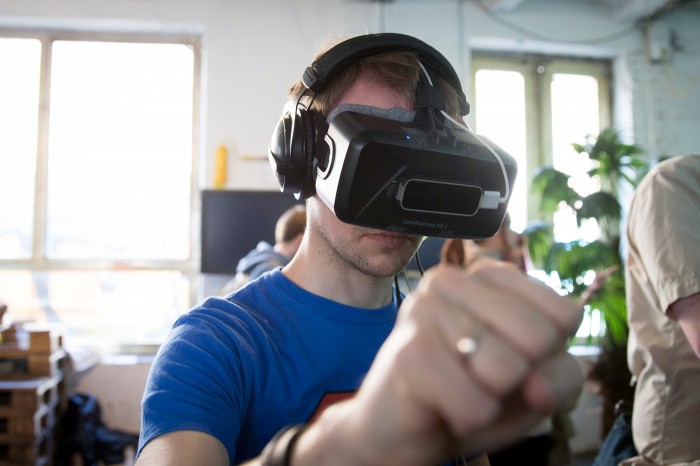Virtual Reality, with Feeling
Truly immersive virtual reality requires more than just convincing visuals. Now a British startup has developed a neat way to inject feelings, too.
In the past, external cameras have been used to monitor the movement of facial features as a means of adding emotion to VR. The new system, developed by Emteq, uses small sensors embedded into a VR headset to measure electrical signals, heart rate, and muscle movement. According to Engineering & Technology, that allows the system, known as Faceteq, to capture a wider range of emotional response than visual approaches.
The detected emotions can then be applied to an avatar in the virtual world. That clearly has uses in game play and the workplace: observing another person’s emotions in the virtual world could add an extra layer of realism. Or, perhaps, even give away aspects of your play that might otherwise have remained secret.

It’s not the only approach being used to make VR more convincing. A small startup called Midas Touch Games is developing more accurate physics engines to help make human movement in the virtual world look more realistic, and the likes of Dolby are trying to make 3-D sound as convincing as possible.
One day, you might never need to take those goggles off.
(Read more: Engineering & Technology, “The Quest to Put More Reality in Virtual Reality,” “Virtual Reality Actually Feels Real When It Uses Physics”)
Keep Reading
Most Popular
Large language models can do jaw-dropping things. But nobody knows exactly why.
And that's a problem. Figuring it out is one of the biggest scientific puzzles of our time and a crucial step towards controlling more powerful future models.
How scientists traced a mysterious covid case back to six toilets
When wastewater surveillance turns into a hunt for a single infected individual, the ethics get tricky.
The problem with plug-in hybrids? Their drivers.
Plug-in hybrids are often sold as a transition to EVs, but new data from Europe shows we’re still underestimating the emissions they produce.
Stay connected
Get the latest updates from
MIT Technology Review
Discover special offers, top stories, upcoming events, and more.